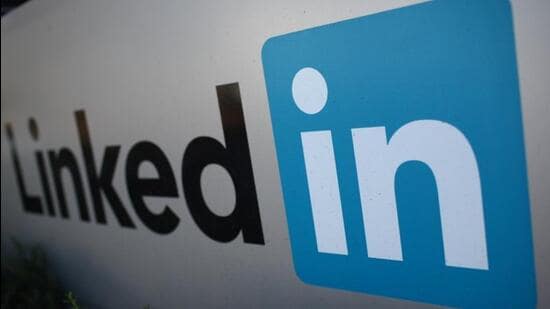LinkedIn is like Pragati Maidan these days. There’s always a trade fair going on, and every post on your feed is a stall to sale
“ALOK ASTHANA. Why is your profile name in all caps?” I asked my father, who had joined LinkedIn, funnily, after his retirement. “It feels like you are shouting your name out there.” I explained the rules of the internet, and my father listened like a student, like in all matters of technology, where I was the father figure, armed with an education he paid for.

“In our times, when we used to fill paper forms, we had to write our name in block letters. That habit stayed,” came the reply. I immediately noted this fake anecdote to share on my LinkedIn, after appending a few leadership lessons.
LinkedIn is the only social network where you are happy when a bald, 40+ male views your profile — it could be a CEO or a senior manager who could offer you a better job or a promotion. The unemployment rate is being calculated by counting the number of #OpenToWork badges on LinkedIn. From the days of encircling job ads in a newspaper, we are now in the age of encircling profile pictures with a badge: #OpenToWork. As if, after years of being closed to the idea of any hardship, you have finally warmed up to the idea of actually working at your day job.
It looks a bit desperate. Having raised money from VCs and worked in the corporate sector, I can assure you, the first step to get anything in life is to pretend you don’t need it.
On LinkedIn, you can’t even tell a person what you really think of him. So, you just manage to type out a “I have a slight disagreement”. That’s how LinkedIn is different from other social networks. That’s why people don’t mob LinkedIn influencers to click selfies. You can’t become a heartthrob by releasing ten business-to-business software-as-a-service (SaaS) lessons.
LinkedIn is primarily used to get better jobs. Every comment, like, or share is a small step towards making yourself look good to a potential recruiter. It’s like working under constant scrutiny of CCTV. After every move, you look at the camera, to notice it noticing you. Stalk other profiles, notice their career path and then come back to your own profile, and look at it from the eyes of a recruiter. Is it good enough? Repeat. That’s how one spends time on LinkedIn.
People here don’t want to be “friends”, they want to “connect” and create plumbing for CVs, sales pitches, business proposals to flow easily. It’s a giant mesh of connections, with a pursuit to reduce the degrees of separation. LinkedIn is the only network that prominently displays this, right next to a profile name, to encourage social climbing. The goal is to reduce the degrees of separation between you and that guy you worship.
LinkedIn is like Pragati Maidan these days. There’s always a trade fair going on, and every post on your feed is a stall to sale: “Please hire me. Please invest in my company. Please buy my courses. I am commenting-for-better-reach so that you visit my stall too. Also, while you are here, endorse me for a fake skill.” It’s the mutual back-scratching Olympics.
For the more accomplished ones, LinkedIn only shows people who are doing much better than you. This triggers imposter syndrome. Someone who raised $1 million from VCs will be shown a founder who’s humble-bragging about raising $10 million. It only shows successful outliers, to give an impression that it is just you who’s struggling. Some might argue that this pushes you to do better or, should I say, plot better for that next promotion.
And such competition leads prominent B-schools to prey on this insecurity: “Attend a two-week course, and become a life-long alumnus of Harvard Business School” — a tag you can prominently display, replacing that private college you went to. Such LinkedIn jewellery has a lot of buyers.
It’s not totally wrong, though. Often, people who have accomplished a lot to outgrow their local college brand, need that shiny name befitting their corporate stature.
Then, there are the storytellers, beyond the earthly designations their HR typed out on their appointment letter. Most of their stories are written by ChatGPT, which gets hundreds of comments, again written by ChatGPT. It’s a fascinating contest of Artificial Intelligence. After collecting enough anecdotal evidence, I can tell you, anyone who has a display picture with a microphone in hand is most likely either a fraud or a potential fraud. If you feel offended, consider yourself an outlier.
Another key benefit of LinkedIn is stalking your schoolmates. When I see my classmates who were laggards at studies, made fun of teachers, and cheated copiously during exams and yet failed a lot, now sporting fancy designations and sharing work-related serious stuff — it’s a funny feeling. It shows, everybody finds their own way. Life mends all and gives enough opportunities to do well, so that, one day, they can create a LinkedIn profile and rub it on the faces of judgmental classmates like me. That’s why I love it.
Abhishek Asthana is a tech and media entrepreneur, and tweets as @gabbbarsingh.The views expressed are personal
See more





